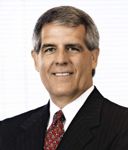Sam's Club launches preventive healthcare program with pharmacists
Launched in January, The Prevention Plan is an online health-screening and primary prevention program similar to wellness plans already being marketed to employer groups. It costs $99.

Key Points
Warehouse retailer Sam's Club has initiated what may be the country's largest retail preventive healthcare program targeting consumers and small businesses. Launched in January to coincide with the annual wave of New Year's resolutions, The Prevention Plan is an online health-screening and primary prevention program similar to wellness plans already being marketed to employer groups. It costs $99.
Sam's Club is also launching free monthly in-store health-screening programs that include an individual pharmacy consultation, blood-pressure checks, bone-density scans, BMI assessment, cholesterol and blood-glucose testing, hearing exams, and eye screenings.
Two crises in one

The Prevention Plan is already being used by employer groups nationwide, Loeppke said. It has been available to individuals at http://www.USPreventiveMedicine.com/, but this is the first time it is being offered in a retail setting.
"Our mission is to make the world a healthier place," Loeppke said. "Health doesn't need to be limited to people whose employer decided to offer a wellness program. Let's make it available to individuals and family members who are not associated with an employer benefit plan. Prevention has the clinical evidence to show that it really works. Prevention is an idea whose time has finally come."
The evidence for prevention
The evidence is a 12-month study published in Population Health Management in November 2010. Loeppke and fellow researchers followed 2,606 participants from numerous employer groups. They tracked the incidence and severity of 15 risk factors for diabetes, cardiovascular disease, and other preventable chronic conditions.
Results showed that with 24/7 nurse hotlines, one-on-one health coaching, contests, group events, and employer incentives, the high-contact program significantly reduced the percentage of employees with high-risk blood pressure (42.8%), fasting blood glucose (31.1%), stress (24.9%), and 8 other risk factors for individual participants.
The program also significantly increased the percentage of patients who moved from high risk to intermediate risk or low risk and from intermediate to low risk based on the number and severity of risk factors. Risk factors in this category included body mass index, smoking, elevated blood pressure, elevated cholesterol, fatty diet, physical activity, excessive alcohol use, recreational drug use, seat-belt usage, days of illness in the previous year, and other measures.
How it works
The individual Prevention Plan begins with an extensive health questionnaire and a self-administered finger stick to assess cholesterol and HbA1c levels.
Each patient receives a personalized health-risk evaluation, specific recommendations and action plans to reduce health risks, health-education resources, and personal coaching sessions by telephone or web-based chat.
Participants also receive a prevention schedule that lists all recommended screenings and immunizations based on age, sex, and reported risk factors derived from U.S. Preventive Task Force guidelines.
The pharmacists' role
The Prevention Program includes a detailed section on medication use, including prescription products, OTCs, and supplements, Loeppke said.
Pharmacists play key roles in medication management and adherence, important aspects of successful tertiary prevention. Pharmacist participation can also strengthen primary/secondary prevention.
"Pharmacists are well recognized as trusted resources and health advisors," Loeppke told Drug Topics. "We see potential for pharmacists to be a very important stakeholder in this effort.
"We have a great sick-care system that is reactive and illness-oriented. We need to build on that to be more of a proactive, wellness-oriented system as well."